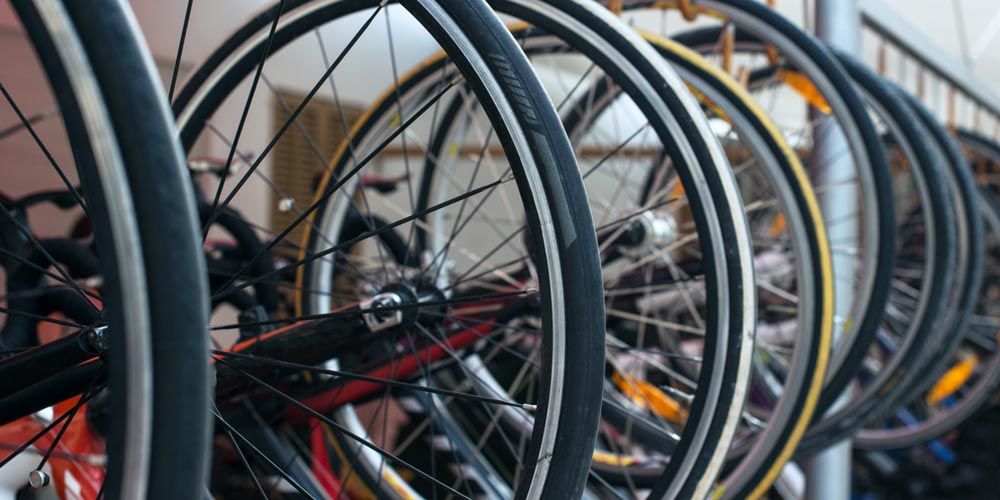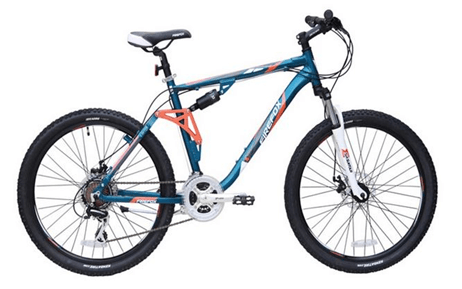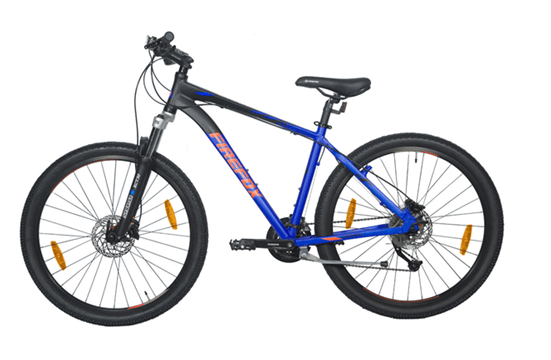As in the case with most bike parts, the first step in picking tyres is to decide what kind of ride are you looking at. Are you planning on commuting daily by bike or riding casually on the weekends? Do you intend to hit the trails regularly or go on odd adventures? The only thumb rules are that the tyre should fit the rim and your treads should always be sharp. When the treads are rounded or uneven, its time to change your tyres. This could happen with regular use or poor handling. Only the rider will be able to tell which one it is. If the treads wear out too soon then it’s probably poor handling.
Before you start picking out tyres, check on the sidewalls of the tyres already on your bike for the size of the rim. The sizes come in multiple formats, here is generic guide:
- Mountain Bikes have numbers like 69.85 x 5.08
The first number is outer diameter by width (both in centimetres).
- Road and Long-Distance Bikes have numbers like 70 x 2.3
The first number is outer diameter by width (both in centimetres).
- BMX Bikes are usually 50.8 cms in diameter with carrying width.
After you have the size figure out, consider the following to narrow down on the tyre. Remember, there is no steadfast rule for tyre types. There are many variables to be considered such as riding conditions, weather, type of terrain, frequency of use, and more. However, overarchingly the guide below is a good basis to work on.
Foldable Tyres
These tyres often have beading similar to Kevlar on the edges that make them light and easy for transport. These tyres work for both mountain bikes and road bikes but are usually on the expensive side. If you are someone who travels with their bike often and need to pack up the bike, then these tyres are advisable.Tubeless Tyres
These are the most popular type used in today’s day. The pressure can be easily fixed across a range of psi to fit the rider’s style and terrain. However, patching a puncture on a tubeless tyre is usually a little tricky. For most city bikers and daily urban commuters, the tubeless tyres work very well.Studded Tyres
Unlikely for use by the average Indian bike, these tyres come with steel or aluminium studs with carbide pins for traction on snowy or icy terrains. So, if you are headed on a biking expedition to the Himalayan regions, you will need to invest in these.Puncture Resistant Tyres
For daily use on slightly rough roads, these tyres make sense as they use Kevlar fibers or thicker treads. This prevents punctures from regular use and abuse. However, these tyres shouldn’t be used for performance riding as they don’t pick up on faster speeds easily.Soft-hard Rubber Tyres
Soft, sticky rubber has better traction while hard rubber is more durable. Again, the decision for soft or hard rubber is taken based on the usage. For example, a high-performance rider will use dual-compound tyres. The outer rubber that meets the ground will be of soft rubber while the inside connecting to the casing will be hard rubber. This results in good grip and durability over tough terrain.
If you have more questions, write in to us and we can help you narrow down your options. Or walk into any Firefox dealership for guidance on tyres. Also, we are welcome to any inputs that our seasoned riders have that could be of use to amateur riders.
In the meantime, keep riding and building your #EverydayAdventure






Sign in with